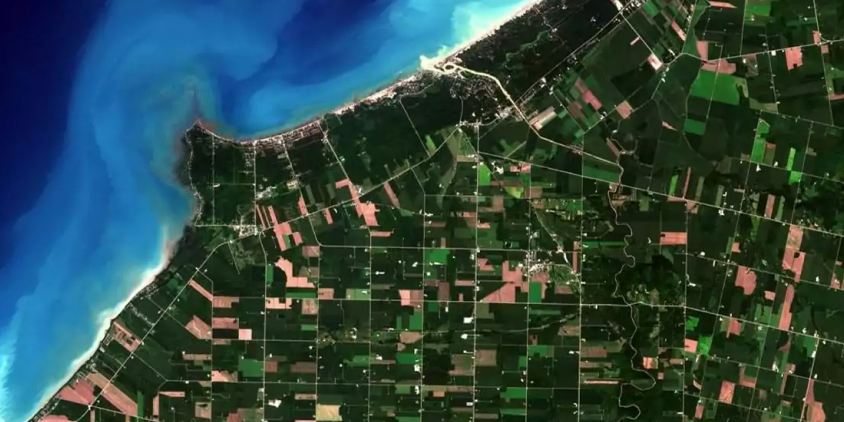ब्रह्माण्ड भाग-2

ब्रह्मांड: आकाशीय पिंड
ब्रह्माण्ड कम से कम 99.99% खाली स्थान है। इस विशाल, अंधेरे शून्य में तैरते हुए। वहाँ सभी प्रकार की विभिन्न वस्तुएँ हैं, जिन्हें खगोलशास्त्री खगोलीय पिंड कहते हैं; इनमें धूल के कणों से लेकर ग्रह, तारे और आकाशगंगाएँ तक शामिल हैं। हमारे सौर मंडल में एक तारा, सूर्य और ग्रहों और चंद्रमाओं का एक बड़ा परिवार शामिल है जो उसी गैस के बादल से बने हैं जिसने सूर्य को जन्म दिया था। हाल के वर्षों में, सैकड़ों अन्य तारों के आसपास ग्रह देखे गए हैं, जिससे पता चलता है कि हमारा सौर मंडल हमारी आकाशगंगा में अरबों में से एक हो सकता है।
ब्रह्माण्ड: क्षुद्र ग्रह
सौर मंडल के निर्माण से बचे चट्टानी पिंडों को क्षुद्रग्रह कहा जाता है। इनका आकार बोल्डर से लेकर बौने ग्रह के आकार के करीब के पिंडों तक होता है।
ब्रह्माण्ड: कोमेट
ये सौरमंडल के बाहरी हिस्से से आए बर्फ के टुकड़े हैं। कुछ लोग जैसे-जैसे सूर्य के निकट आते हैं और उससे गर्म होते हैं, गैस और धूल की लंबी पूँछें विकसित हो जाती हैं।
ब्रह्माण्ड: चंद्रमा
चंद्रमा, जिसे प्राकृतिक उपग्रह भी कहा जाता है, एक पिंड है जो किसी ग्रह की परिक्रमा करता है। पृथ्वी के पास केवल एक चंद्रमा है, लेकिन बृहस्पति ग्रह के पास लो सहित 67 चंद्रमा हैं।
ब्रह्माण्ड: बौना गृह
द्वार ग्रह स्टेरॉयड से बड़े लेकिन ग्रहों से छोटे होते हैं। ग्रहों की तरह इनका आकार भी गोल है। प्लूटो को बौने ग्रह के रूप में जाना जाता है।
ब्रह्माण्ड: ग्रह
यह एक बड़ी और लगभग गोलाकार वस्तु है जो एक तारे की परिक्रमा करती है और अपने कक्षीय पथ से मलबे को हटा देती है। सौर मंडल में 8 ग्रह हैं।
ब्रह्माण्ड: सितारे
गैसों के ये चमकदार गोले, जैसे सूर्य, अपनी परमाणु ऊर्जा उत्पन्न करके चमकते हैं, और तारे विभिन्न प्रकार, तापमान और आकार में आते हैं।
ब्रह्माण्ड: नाब्युला
अंतरिक्ष में गैस और धूल के चमकते बादल को निहारिका कहा जाता है। कुछ निहारिकाएँ मरते तारों द्वारा निर्मित मलबे के बादल हैं; दूसरे नये सितारों को जन्म देते हैं।

समय में पीछे मुड़कर देखना
क्योंकि प्रकाश को यात्रा करने में समय लगता है, जब हम अंतरिक्ष में देखते हैं, तो हम समय में पीछे देख रहे होते हैं। दिखाई देने वाली सबसे दूर की वस्तुएँ हबल टेलीस्कोप द्वारा खींची गई आकाशगंगाएँ हैं। हमने उन्हें वैसे ही देखा जैसे वे 30 अरब साल पहले थे। ब्रह्माण्ड इनसे कहीं आगे तक फैला हुआ है, लेकिन इससे अधिक दूर तक वस्तुओं को देखना असंभव है क्योंकि उनके प्रकाश को उन तक पहुँचने का समय नहीं मिला है।
सबसे दूर की वस्तुएँ
हबल टेलीस्कोप से ली गई इस तस्वीर में सबसे कमजोर आकाशगंगाओं की रोशनी को पृथ्वी तक पहुंचने में 3 अरब साल लग गए।
क्या बात है ?
ब्रह्मांड में हम जो पदार्थ देख सकते हैं उनमें से 98 प्रतिशत तत्व हाइड्रोजन और हीलियम हैं। लेकिन जिस तरह से तारे और आकाशगंगाएँ गुरुत्वाकर्षण द्वारा खींचे जाते हैं, उसका हिसाब लगाने के लिए पर्याप्त सामग्री नहीं लगती है। परिणामस्वरूप, खगोलविदों का मानना है कि आकाशगंगाओं में काला पदार्थ होता है, जिसे हम देख नहीं सकते। ब्रह्माण्ड का विस्तार करने वाली एक अज्ञात शक्ति भी है, जिसे डार्क एनर्जी के नाम से जाना जाता है।
क्या कोई वहां है?
विज्ञान में सबसे बड़े प्रश्नों में से एक यह है कि क्या जीवन पृथ्वी पर अद्वितीय है या अन्य दुनिया में उत्पन्न हुआ है। और यदि जीवन कहीं और प्रकट हुआ है, तो क्या बुद्धिमान प्राणी विकसित हो सकते हैं? वैज्ञानिकों ने अलौकिक प्राणियों के संकेतों को देखने और सुनने के लिए एक परियोजना स्थापित की है, और हमारे अस्तित्व के बारे में किसी भी एलियंस को सूचित करने के लिए सितारों को संदेश भेजे गए हैं।
अरेसिबो संदेश
1974 में, वैज्ञानिकों ने स्टार क्लस्टर M13 की ओर एक रेडियो संदेश प्रसारित करने के लिए प्यूर्टो रिको में विशाल अरेसीबो रेडियो टेलीस्कोप का उपयोग किया। संदेश में प्रतीक (दाएं) शामिल है जो मानव का प्रतिनिधित्व करता है, हमारी आधार-10 गिनती प्रणाली, डीएनए अणु और सौर मंडल एलियंस को शामिल करने के गंभीर प्रयास की तुलना में एक प्रचार स्टंट है, प्रसारण को एम 13 तक पहुंचने में 25,000 साल लगेंगे, और एक जवाब आने में 25,000 साल लगेंगे.

पायनियर पट्टिका
रोबोटिक अंतरिक्ष यान पायनियर 10 और पायनियर 11 ने 1973-74 में बृहस्पति और शनि ग्रह का दौरा किया और फिर गहरे अंतरिक्ष में उड़ान भरी। यदि एलियंस कभी भी अंतरतारकीय अंतरिक्ष के माध्यम से बहते हुए एक यान की खोज करते हैं, तो उन्हें पृथ्वी से एक संदेश के साथ उत्कीर्ण एक स्वर्ण-ग्रह पट्टिका मिलेगी।
सेटी
सेटी (परलौकिक बुद्धि की खोज) परियोजना में शामिल खगोलविदों ने विदेशी सभ्यताओं द्वारा प्रसारित कृत्रिम रेडियो संकेतों की खोज में आकाश को स्कैन करने के लिए शक्तिशाली रेडियो दूरबीनों का उपयोग किया। SETI परियोजना 1960 से चल रही है, लेकिन कुछ झूठी चेतावनियों के बावजूद, इसे अब तक विदेशी संकेतों का कोई निर्णायक सबूत नहीं मिला है।












